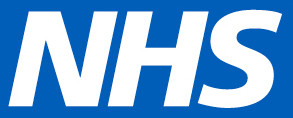Case study: Berkshire Healthcare NHS Foundation Trust
Overview of pilot
The process was very new and a small number of managers felt they could have had a little more time to consolidate what was required. It was also identified that there needed to be better clarity around the purpose of the Talent Review Board in terms of calibration.
The Thames Valley and Wessex Leadership Academy, in association with the national NHS Leadership Academy, invited Berkshire Healthcare Foundation Trust to pilot the introduction of talent management. The pilot was sponsored by the Chief Executive and the Executive Group who wanted to pilot a talent management process with their direct reports. BHFT opted to do this for two key reasons:
- To gain greater insight into the leadership talent at the top of the organisation to inform development and succession planning at this level;
- To give senior managers experience of participating in the process so that they could then lead this with their direct reports with credibility and direct experience.
The talent management pilot took place at the same time as the introduction and piloting of a new values based appraisal system.
This report will focus on the talent management pilot, although it may be that manager/individual experience and views cited here could be influenced by the new appraisal process running in parallel.
BHFT were supported by Talent Works Limited in the design and implementation of this pilot. Talent Works presented a draft approach which was tailored and refined during consultation with the Executive and senior leaders participating in the talent management pilot. This was also informed by the NHS Leadership Academy pilot materials and where possible these were integrated into the approach.
The general approach was to adopt the nine box grid. After some preparation, this allowed for an exploration with each individual as to their current performance and leadership potential. This was followed by a Talent Review Board or calibration session with all managers (the executive in the pilot) in order to gain a wider understanding of the talent pool as a whole. The agreed position on the grid was then fed back to each individual and their development/ongoing support from their manager was discussed.
Implementation process
BHFT were supported by Talent Works Limited in the design and implementation of this pilot. Talent Works presented a draft approach which was tailored and refined during consultation with the Executive and the senior leaders participating in the talent management pilot. This was also informed by the NHS Leadership Academy pilot materials and where possible these were integrated into the approach.
The general approach was to adopt the nine box grid. After some preparation, this allowed for an exploration with each individual as to their current performance and leadership potential. This was followed by a Talent Review Board or calibration session with all managers (the executive in the pilot) in order to gain a wider understanding of the talent pool as a whole. The agreed position on the grid was then fed back to each individual and their development/ ongoing support from their manager was discussed.
A more detailed project overview is shown as a flow diagram in Appendix 1 for reference.
Executive feedback
In general Talent Management was seen as hugely valuable by the CEO and the Executive who felt that they were able to deepen their insight into each member of the senior management population. This developed a shared ownership for the development and management of this talent pool and is informing how individuals are managed and developed in the current role as well as informing their development for future roles. It also gives useful management information to inform succession planning and contingency planning.
Specific feedback from the executive collected through an evaluation questionnaire is summarised below.
Ease of use: Managers received the training briefing and found the talent management forms easy to use.
Identifying learning and development needs: Most found talent management to be useful in identifying leads and one reported it to be fairly useful. Key benefits appeared to be in providing a useful structure and focused process that linked with the PDP and identified opportunities for both personal and career development.
Identifying leadership potential/potential for growth: All found talent management either useful or critical in identifying leadership potential. It was seen as highlighting valuable information and insight that would not have been gained through a traditional appraisal process. For one manager, it was found to be effective with direct reports who were open possibilities and less effective with an individual who held a very a very fixed perspective.
Communication with staff: All found it useful in improving communication with their staff. The structure and framework allowed managers to have constructive conversations with their direct reports about potentially sensitive topics, improving understanding and several direct reports commented on how useful they had found the conversations.
What worked well?
- Planning of the process, guidance received, talent management board
- Development of the approach and process in partnership
- Being supported and advised by experts with excellent communication skills
- Supportive and clear briefing backed up by clear written resource information
- The principles and approach is an advance on previous arrangements.
- Impact will need to be assessed more fully when it is widely embedded across the organisation
- Guide to the conversation and the conversation itself
What worked less well / ideas for improvement?
The process was very new and a small number of managers felt they could have had a little more time to consolidate what was required. It was also identified that there needed to be better clarity around the purpose of the Talent Review Board in terms of calibration.


Please sign in or register to make a comment.